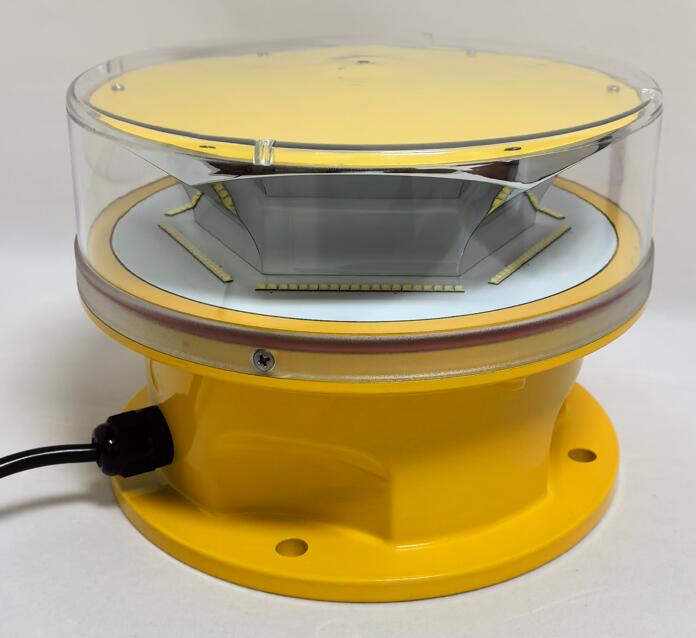Posted: 2025-02-25
In the realm of aviation and infrastructure safety, obstruction lights play a critical role in preventing accidents and ensuring the visibility of tall structures. As the demand for customized and high-quality obstruction lights grows, the concept of Obstruction Light ODM (Original Design Manufacturer) has gained significant traction. ODM services allow companies to tailor obstruction lights to meet specific requirements, ensuring optimal performance and compliance with international standards. This article explores the importance of obstruction lights, the advantages of ODM solutions, and their impact on modern safety systems.
The Importance of Obstruction Lights
Obstruction lights are essential for marking tall structures such as buildings, towers, wind turbines, and bridges, which pose potential hazards to aircraft. These lights serve as visual warnings, especially during nighttime or low-visibility conditions, helping pilots identify and avoid obstacles. By enhancing the visibility of structures, obstruction lights significantly reduce the risk of collisions, safeguarding both human lives and valuable assets.
The International Civil Aviation Organization (ICAO) and other regulatory bodies have established strict guidelines for the installation and operation of obstruction lights. Compliance with these standards is mandatory to ensure the safety of air navigation. As a result, the design and functionality of obstruction lights must meet precise specifications, making customization a key factor in their development.

The Rise of Obstruction Light ODM
Obstruction Light ODM refers to the process of designing and manufacturing obstruction lights based on the specific needs of clients. Unlike off-the-shelf products, ODM solutions are tailored to meet unique requirements, such as varying light intensities, colors, and mounting configurations. This approach offers several advantages:
Customization: ODM services enable clients to customize obstruction lights to suit their specific applications. Whether it's adjusting the light intensity for different altitudes or designing a unique housing for extreme weather conditions, ODM solutions provide the flexibility needed to meet diverse needs.
Compliance: ODM manufacturers are well-versed in international aviation regulations and standards. By collaborating with an ODM partner, clients can ensure that their obstruction lights comply with ICAO, FAA, and other relevant guidelines, reducing the risk of non-compliance penalties.
Innovation: ODM manufacturers often invest heavily in research and development, resulting in cutting-edge technologies and innovative designs. Clients can benefit from advanced features such as energy-efficient LEDs, solar power integration, and smart monitoring systems.
Cost-Effectiveness: While customization might seem expensive, ODM solutions can be cost-effective in the long run. By optimizing the design and functionality of obstruction lights, ODM manufacturers can reduce production costs and improve the overall value of the product.
| obstruction light ODM |
| obstruction lights |
Quality Assurance: ODM manufacturers typically adhere to strict quality control processes, ensuring that each obstruction light meets high standards of durability, reliability, and performance. This is particularly important for applications in harsh environments, where equipment failure can have serious consequences.
Applications of Obstruction Light ODM
Obstruction Light ODM solutions are widely used across various industries, including aviation, telecommunications, renewable energy, and construction. Some common applications include:
Wind Turbines: As wind farms continue to expand, the need for reliable obstruction lights on turbines has grown. ODM solutions can design lights that withstand the unique challenges of wind turbine environments, such as vibration and extreme weather.
Telecommunication Towers: Tall communication towers require obstruction lights to ensure their visibility to aircraft. ODM services can customize lights to match the tower's height and location, ensuring compliance with aviation regulations.
Skyscrapers and Bridges: Urban infrastructure projects often require obstruction lights to mark tall buildings and bridges. ODM solutions can integrate these lights seamlessly into the structure's design while maintaining functionality and aesthetics.
Offshore Platforms: Oil rigs and other offshore structures pose significant risks to low-flying aircraft and vessels. ODM manufacturers can design rugged obstruction lights capable of withstanding the corrosive effects of saltwater and harsh marine conditions.
The Future of Obstruction Light ODM
As technology continues to advance, the future of Obstruction Light ODM looks promising. Emerging trends such as smart lighting systems, IoT integration, and renewable energy solutions are expected to shape the next generation of obstruction lights. For instance, smart obstruction lights equipped with sensors and connectivity features could provide real-time data on their performance, enabling proactive maintenance and reducing downtime.
Additionally, the growing emphasis on sustainability is likely to drive the adoption of solar-powered obstruction lights. ODM manufacturers are already exploring ways to integrate solar panels and energy storage systems into their designs, offering eco-friendly solutions that reduce operational costs and environmental impact.
Obstruction Light ODM represents a significant advancement in the field of aviation and infrastructure safety. By offering customized, compliant, and innovative solutions, ODM manufacturers are helping to enhance the visibility of tall structures and reduce the risk of accidents. As the demand for tailored obstruction lights continues to grow, ODM services will play an increasingly important role in shaping the future of safety systems.
In a world where safety and sustainability are paramount, Obstruction Light ODM stands out as a beacon of innovation and reliability. By illuminating the skies and guiding the way, these lights not only protect lives but also pave the way for a safer and more connected future.